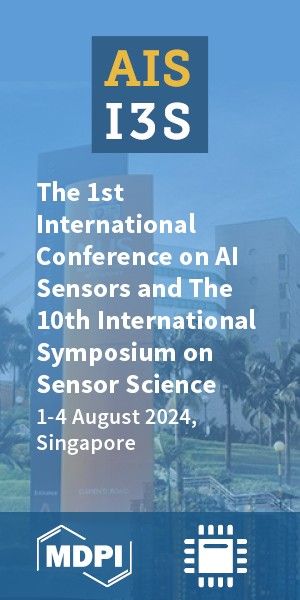Article
Version 1
This version is not peer-reviewed
The Protein/RNA World and the Origin of Life
Version 1
: Received: 14 October 2019 / Approved: 15 October 2019 / Online: 15 October 2019 (11:18:58 CEST)
How to cite: Chatterjee, S. The Protein/RNA World and the Origin of Life. Preprints 2019, 2019100167 Chatterjee, S. The Protein/RNA World and the Origin of Life. Preprints 2019, 2019100167
Abstract
The transition from the Peptide/RNA world to the Protein/RNA world in the hydrothermal vent environment was a major event in the history of life. The advent of proteins utterly changed the conditions of emerging life, representing a watershed in its development. During subsequent translation various protein enzymes emerged driving protocells into a more complex and interconnected system. With their astonishing versatility, the protein enzymes catalyzed crucial biochemical reactions within protocells into more complex biomolecules in diverse metabolic pathways, whereas structural proteins provided strength and permeability in the cell membrane. Four major events followed after availability of various kinds of protein molecules during prebiotic synthesis. These are: (1) the modification of the phospholipid membrane into the plasma membrane; (2) the origin of primitive cytoplasm; (3) the beginnings of the virus world; and (4) the advent of DNA. The first innovation mediated by proteins was the improvement of the cell membrane. The phospholipid membrane was initially evolved in a vent environment from the gradual modification of a fatty acid membrane via an intermediate phosphatidate acid by non-enzymatic reactions. The phospholipid is then synthesized from phosphatidate acid by a series of enzymes. To make the phospholipid membrane more permeable, various protein molecules interacted with the cell membrane. Proteins not only stabilized the wall membrane, but also acted as pumps, preventing some molecules from the protocells from crossing the membrane barriers, while permitting other selected molecules and ions to enter and leave the protocell. The second modification led by proteins is the gradual conversion of the interior of the protocell from a water-like medium into a gel-like cytoplasm, which became the storehouse of a wide range of biomolecules including amino acids, proteins, nucleic acids, ribosomes, as well as salt and water. The third innovation utilizing the newly synthesized proteins was the emergence of the ancient virus world. In the milieu of different kinds of mRNAs in the prebiotic soup, jelly-roll capsid genes originated de novo within genomes of nonviral mRNAs by overprinting. These fragile capsid genes were possibly coated by proteins on the mineral substrate for stability and durability, transforming them into ancient viral particles. These protein coats were random and were not encoded by encased genes. Some protocells might have engulfed these viral particles, when the capsid genes utilized the ribosomes of the host to translate into the appropriate capsid proteins. These capsid proteins then coated the viral genes to make new copies of primordial viruses inside the protocell. Since then, viruses became capsid-encoding organisms. These primordial mRNA viruses parasitized RNA-based protocells, manipulating them to make new copies of themselves. This was the beginning of a relentless war between viruses and their protocellular hosts. The next stage in viral evolution was the emergence of a primitive retrovirus (pre-retrovirus) with a new kind of replicative strategy in a sense that it could turn its RNA into DNA using its own reverse transcriptase enzyme. This is the beginning of the Retro world that facilitated the transition from RNA to DNA genomes. The infection of RNA protocells with pre-retroviruses progressively transferred the RNA genome to a viral DNA genome by retro-transcription. The advent of DNA by the pre-retrovirus marks the fourth innovation, when a number of enzymes had already developed and were utilized by pre-retroviruses. With continued infection, DNA viruses slowly transferred not only their core replication enzymes, such as helicase, primase, and DNA polymerase, to RNA protocells, but also to their DNAs as well. Thus, began the DNA world, when DNA replaced RNA as the major genome of the protocells. With the advent of DNA, replication of information was entirely dissociated from its expression. Because DNA is much more stable than mRNA with more storage capacity, it is a superb archive for information systems in the form of base sequences. DNA progressively took over the replicative storage function of mRNA, leaving the latter for protein synthesis. The new protocell with the DNA genome will diversify into large populations of DNA protocells that will outcompete populations of RNA protocells. Genetic information began to flow from DNA to mRNA to protein in a two-step process involving transcription and translation. In the biological stage, DNA replication was central to the binary fission of the first cell, orchestrated by the duplication of genomes and then the division of the parent cell into two identical daughter cells. It was carried out by a set of enzymes that formed a Z-ring at the site of replication. With the onset of binary fission, the population of primitive cells grew rapidly in the hydrothermal vent environment, undergoing Darwinian evolution and diversification. These primordial hyperthermophiles, presumably the first life, obtained food and energy directly from the vent environment. However, such a situation was self-limiting, so the early cells evolved their own mechanisms for generating metabolic energy and synthesizing the molecules necessary for their reproduction. The earliest fossil record (≥ 3.5 Ga) of biotic activity is preserved in the Archean hydrothermal and sedimentary rocks of the Nuvvuagittuq Craton of Canada, the Isua Craton of Greenland, the Pilbara Craton of Australia, the Kaapvaal Craton of South Africa, and the Singhbhum Craton of India in the form of the carbonaceous remains of microbial cells, cellular microfossils, and stromatolites. These microscopic fossils provide crucial evidence of the origin and early evolution of prokaryotic cells, beginning with hyperthermophiles. Molecular phylogenetic analysis suggests that both domains of life ¬– Bacteria and Archaea probably split from the last universal common ancestor (LUCA), a hyperthermophilic organism. In the younger sequences of these Archean cratons, two kinds of photosynthetic bacteria, anoxygenic green sulfur bacteria, and oxygenic cyanobacteria, appeared in quick succession from the thermophilic ancestor, indicating a shift of niche from a benthic to a planktonic, with reduced thermotolerance. The development of anoxygenic and oxygenic photosynthesis would have allowed life to escape the hydrothermal setting and invade a newly evolved habitat—broad continental shelves to tap solar energy. Cyanobacteria invaded the global ocean, turned it into blue and green, produced oxygen for the first time, and left their signatures in the carbonates and stromatolites.
Keywords
protein/rna world; plasma membrane; cytoplasm; virus world; pre-retro virus; emergence of dna; transcription and replication; first cells; hyperthermophiles; luca; bacteria and archaea; anoxygenic bacteria; oxygenic bacteria; global distribution of cyanobacteria
Subject
Biology and Life Sciences, Biochemistry and Molecular Biology
Copyright: This is an open access article distributed under the Creative Commons Attribution License which permits unrestricted use, distribution, and reproduction in any medium, provided the original work is properly cited.
Comments (0)
We encourage comments and feedback from a broad range of readers. See criteria for comments and our Diversity statement.
Leave a public commentSend a private comment to the author(s)
* All users must log in before leaving a comment







